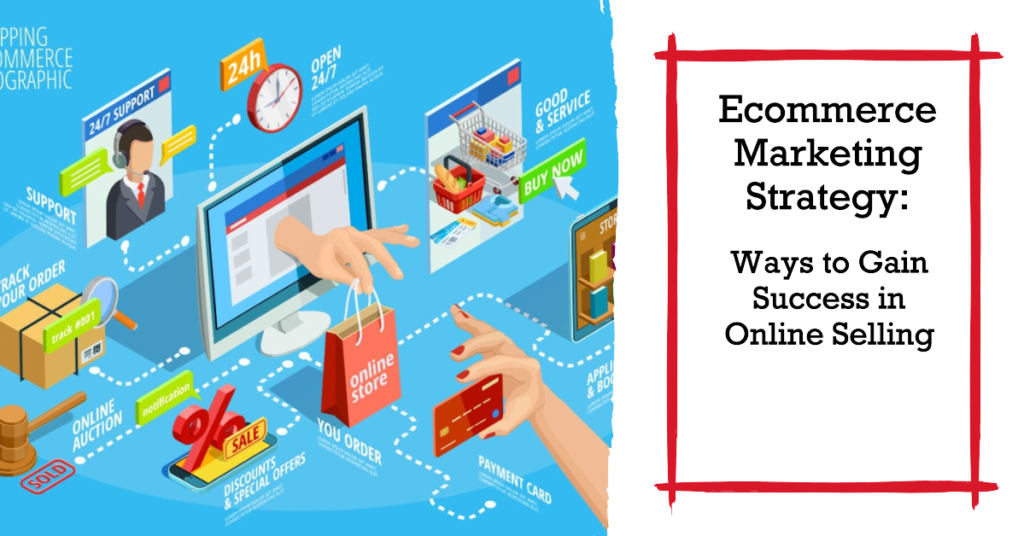With E-commerce becoming a critical part of the trading sector, various concepts emerge due to the diverse needs of its participants, such as online businesses. In the digital landscape, success hinges on adeptly navigating strategies. That not only drive visibility but also foster engagement and conversions. By grasping the importance of such strategies, businesses can expand and succeed in such a competition. So, to understand these strategies, this article will break them down into the five best-known and effective ecommerce marketing strategy based on how they work and how businesses can adapt and implement them.
Search Engine Optimization (SEO)

E-commerce SEO raises the exposure and search engine rankings of your website to bring long-term, natural visitors to your online shop.
This involves producing excellent content, developing backlinks, and optimizing product, category, and meta pages.
Any SEO campaign must start with a thorough grasp of the search terms, or keywords. That members of your target audience use to locate the things that you sell.
Here are few ways an online business’s webpage rank high in the search engines:
- Make sure that your website can be used on mobile phones
- Use Google PageSpeed Insights to optimize page load speed.
- Do an audit for SEO
- Determine the terms you wish to rank for by conducting in-depth keyword research
- Include a list of all the blog pages, posts, and categories. Link each article and page to your goal keywords and keyword phrases. Then carefully insert them into on-page components like the title, URL, header tags, text, alt text, anchor link, and so forth.
- By setting up your Google My Business profile, you can bolster your local SEO strategy.
- Correct technical SEO mistakes like duplicate pages. If required, get assistance from an SEO specialist.
- Configure Google Search Console for your website.
Content Marketing – Ecommerce Marketing Strategy

For e-commerce websites, content marketing encompasses more than just product, category, and cart pages. Since copywriting helps to effectively drive conversions, it is a crucial part of e-commerce marketing.
This can be done in various ways and contexts, here is an example of how it can be done:
- Product pages: Headline, detailed product information, large photos, and demonstration videos.
- Blog Section: Write insightful and helpful content for your target audience that revolves around your niche. Also, examples include checklists, infographics, blog entries, and downloadable materials.
- Rich Media: Storytelling for e-commerce tales has a lot of room. When creating content, experiment with podcasts, videos, and other interactive media.
Email Marketing – Ecommerce Marketing Strategy

When using email marketing strategically, online businesses can dramatically increase their conversion rates. Email is still very important in e-commerce marketing, despite the sporadic appearance of “Email is dead” articles.
Effective marketing strategies can help online businesses increase the number of people on their list. For instance, luring visitors to their website to subscribe to their email list with content downloads. Or by posting lead-generating tools in strategic locations.
Online businesses can start the proper email sequence after customers sign up for the list or offer their email addresses during the checkout process.
A few instances of emails that can be sent are as follows:
- a drip email campaign intended to welcome new subscribers
- transactional emails that provide customers with updates on their orders, shipments, delivery confirmations, order confirmations, invoices, and returns/exchange emails
- Sometimes, promotional emails are sent out to highlight chances for upselling or cross-selling.
Social Media Marketing – Ecommerce Marketing Strategy

Moreover, one of the sectors that gains the most from social media usage is e-commerce. The rationale is that product advertisements aren’t always seen as intrusive, and users have different intentions when perusing through social media.
Social media is perfect for e-commerce because it is mostly a visual platform, which makes it simple to convince people using pictures and videos.
Future e-commerce marketing efforts for an online business will be made easier by the emergence of social commerce platforms like Instagram Shopping, in addition to the liberal use of social ads to reach the target demographic.
Paid Advertising

After reaching the maximum audience through organic means, online firms’ e-commerce store revenue depends on how much they can afford to spend on advertisements. Because of this, practically all prosperous online retailers make significant investments in sponsored advertisements that target every phase of the buyer’s journey, such as search, social media, native, and others.
Online companies can start their sponsored advertising campaigns in the following ways:
- To reach the awareness level, spend money on Google Shopping and Search advertisements.
- Use remarketing advertisements to reach website visitors who left without making a purchase.
- Use lookalike audience advertisements to broaden your target audience.
Conclusion: Ecommerce Marketing Strategy
In conclusion, for online businesses to succeed in the cutthroat environment of today, they must fully understand the nuances of e-commerce marketing. Additionally, businesses can dramatically improve their online presence, successfully engage their audience, and increase conversions by utilizing the power of SEO, Content Marketing, Email Marketing, Social Media Marketing, and Paid Advertising.
Moreover, adopting these tactics as essential parts of their marketing toolkit enables companies to stay ahead of the curve and adjust to the changing digital world.
So, businesses may fully utilize e-commerce marketing to achieve sustainable growth and success in the fast-paced world of online shopping by using strategy, creativity, and perseverance.









[…] with E-Commerce Marketing Strategy, an E-commerce marketing plan outlines the precise methods a business will employ to draw in, win […]
[…] Ecommerce Marketing Strategy: Ways to Gain Success in Online Selling […]